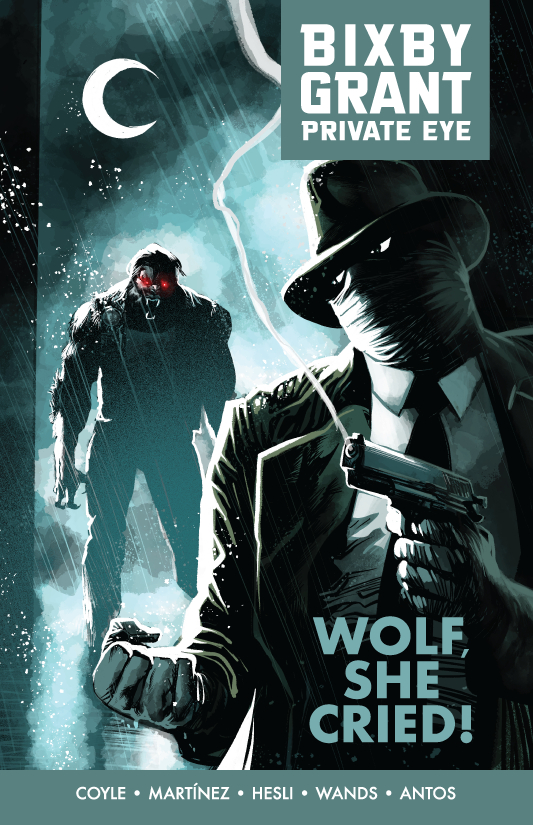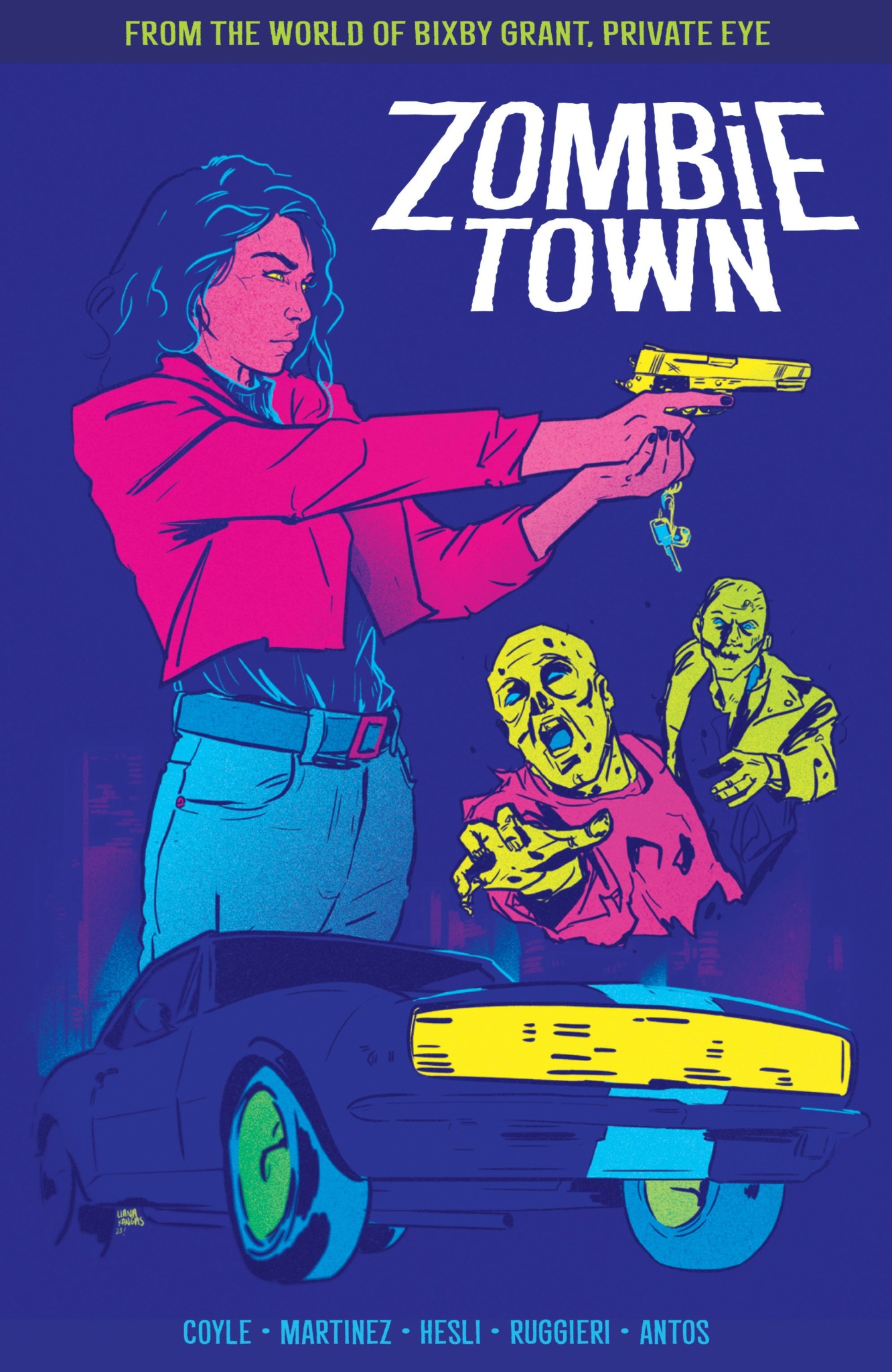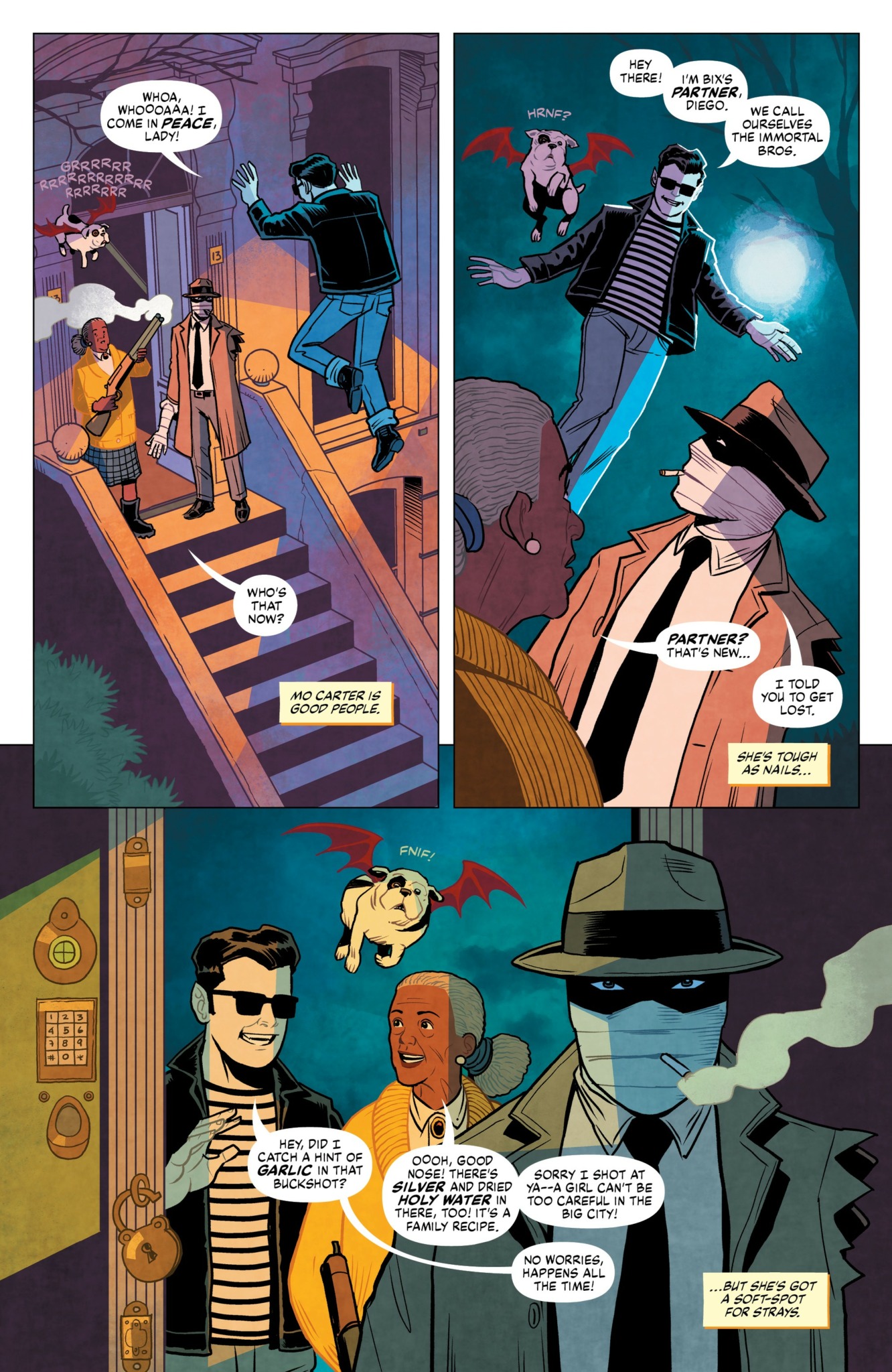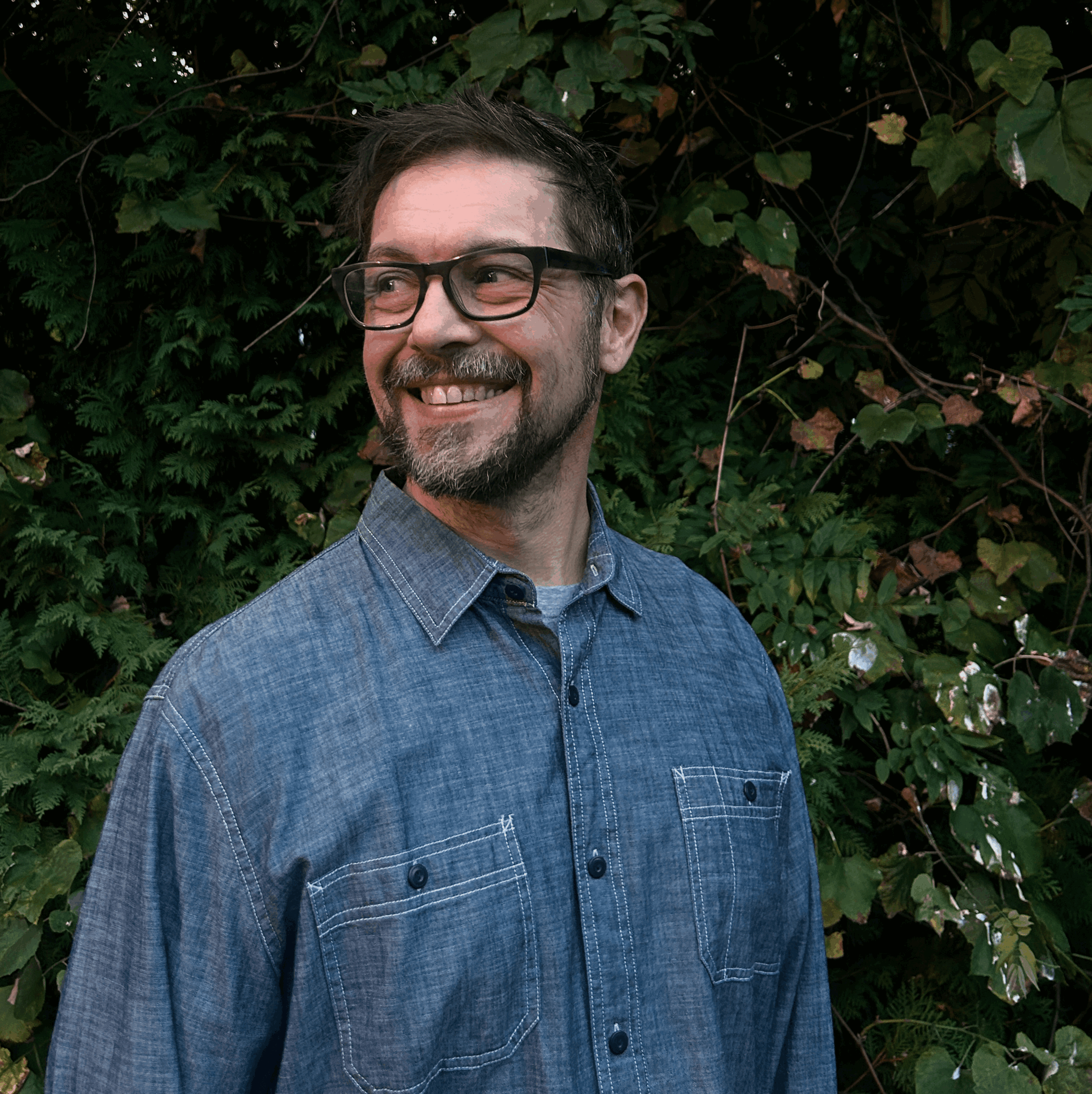We’re excited to introduce you to the always interesting and insightful Patrick Coyle. We hope you’ll enjoy our conversation with Patrick below.
Patrick, looking forward to hearing all of your stories today. Do you wish you had started sooner?
I went to art school and got a degree in illustration, fully intending to become a comic book artist. But when I got out of school, I discovered how incredibly difficult it was to break into the industry, and that I was not good enough. I also decided I could not live the life of a freelancer, I needed more stability. So I backed my way into a career in UX Design. In the 90’s, if you knew HTML and Photoshop, you could make a living as a web designer, so I did that for a long time, worked for some great companies (some not so great), and eventually worked my way up to Creative Director for a few global companies.
But during that time, my love of comics and the longing to create them kept popping up. So about ten years into my career, I met my friend Shannon Eric Denton, who at the time was working as a storyboard artist for Warner Brothers Animation. He’d also done work for Marvel and Image comics. I was starting to write and draw my own comics, and he offered to help me with my craft while I helped him with his website. After we became buddies, we decided to start one of the first online publisher of indie comics, Komikwerks. Shannon is a master at networking, and he knows EVERYONE in comics and animation, so he pulled in a lot of great writers and artists to post their creator-owned comics with us. It was a dream come true for me, a lifelong comics fan, because I got to meet some of my heroes, and actually work as their publisher. We partnered with AOL and Stan Lee, among other people. I published a couple of my own short comics, but most of the time I was running the business, managing our website, and working on book layouts for our anthologies. So while it was a lot of fun to run Komikwerks, it wasn’t as creatively fulfilling as I had hoped it would be when we started.
After nearly ten years, I stepped away from Komikwerks. I was married, had two small children, and full-time day job as a creative director with a long commute. It was too much to handle all at once. But I the creative spirit was still gnawing at me, telling me I needed to create my own comics.
Finally, after my kids got a little older and life settled down, I decided to get back into comics. This time, I resolved to only work on my own projects, just get my comics out there, and not run a larger enterprise where other people are counting on me. I also made the hard decision that I was not going to be able draw my own comics — I was too rusty, and it would take too long to get my skills in shape. Not an easy thing to let go of for me, but it meant that I’d be able to get things out sooner than later. That was about five years ago, and now I’ve been publishing my own comics for three years!
Hindsight is 20/20, of course, and I would love to go back twenty-five years and tell myself to get drawing more and start honing my writing skills, but that can’t happen. And I’m not sure I’d want it to — I wouldn’t have had the experiences I had during my Komikwerks years if I had stuck to my own projects back then, and I wouldn’t have forged the life-long friendships I made with Shannon and other folks.
While it was a long and winding road to get where I am now, I think it was ultimately the right way to go, for me. I’ve learned a lot by working with other creative folks, and have a much better perspective on what my creative work can — and can’t be. And frankly, I’m having a ton of fun doing what I’m doing, so really, what do I have to complain about?

Patrick, love having you share your insights with us. Before we ask you more questions, maybe you can take a moment to introduce yourself to our readers who might have missed our earlier conversations?
I love comics. I’ve loved them since I was a kid and you could buy them off a spinner rack at the local corner store. I started making my own comics at the age of 8, and even started a publishing company with some friends in middle school. We put out four quarterly issues of a superhero anthology featuring original characters called Andromeda Comics, each issue about one hundred pages. We “printed” them using the photocopier at my father’s office. We even got a few newspaper articles written about us in the local paper! It was a ton of fun. And it was all I wanted to do.
In college I got a BFA in illustration, intending to make comics. Instead, I ended up designing websites and became a creative director in the internet sector. It’s a good living, more stable than I would’ve had as a freelancer making comics. But in my twenties, I was single and had lots of free time, so I started making comics again after years away from it. That led to me starting my own online comic publisher, Komikwerks, with my friend Shannon Eric Denton, which in turn led to me learning all about the comic industry; the creative process, marketing, distribution, etc. I also learned what I want from comics, and what I want my comics to be.
There are people like Grant Morrison, Alan Moore, and Neil Gaiman who write very heady, smart comics that have redefined the genre. I am not that kind of writer. I like fun, brash, pulpy comics that take themselves seriously enough to sell the concept, but not SO seriously that there too much weight to it. I grew up on Spielberg and Lucas movies, many of which were homages to old serials and campy sci-fi properties. That really shaped my taste as a kid, and does to this day.
So what I hope I deliver to readers is a fun story that is a mash-up of other genres they enjoy: mystery, horror, action, and noir, with a little humor thrown in. While I don’t write specifically for kids, I generally write stories that are appropriate for all ages, and I know that I have readers ranging from 12 to 75.
I self publish, but I work with a stellar team of professional artists, colorists and editors and I’d put our work next to the comics at any of the major publishers. I deliver a professional-grade product that can be enjoyed by a wide array of readers, with fun stories and characters. That’s what I’m looking for, so that’s what I make!

Is there mission driving your creative journey?
My goal has changed over the years. Early on, it was to be the best artist I could be, be better than others, and gain financial success. Then it was to make things of merit, to get my point of view out there, like it was super important that people hear my take on things : )
At this point in my life, my goal is to have fun with collaborators I like working with, to make things that I like, put them out in the world, and if people dig it, so much the better. Having kids really changed my perspective on this quite a bit. I don’t want to teach them to make things for reputation or money, but for the love of it. Don’t create things that you think people want, make things YOU want. This is your life, and you should enjoy it rather than pursuing some brass ring that you will likely never grab.
I used to think this approach was foolish. People would say “make what you like, and success will come”. But my problem was that I was defining “success” incorrectly. Fame and fortune is how our society defines success, and so for a long time, I did too. But once I started to shift my own goals, that attitude made a lot more sense to me.
Now, the successes I see with my creative endeavors are small but personal and meaningful. People at conventions or online tell me how much they like the comics I make. Aspiring creators tell me they want to do things like I’m doing, and ask me for guidance. I’ve formed friendships with professionals that I respect and built myself a small community of collaborators that help me grow as a creator.
It’s not riches or notoriety, but it’s extremely fulfilling, and keeps me inspired on a daily basis.

Is there something you think non-creatives will struggle to understand about your journey as a creative?
There’s a popular misconception that writers, artists and other creative folk work when the muse strikes, and that our work arrives fully formed when we sit down to let the muse channel through us onto the page. Man, do I wish this were true.
Sure, we have flashes of ideas here and there, but if you ask writers, artists, sculptors, filmmakers, or other creative people what their process is like, you’ll find it’s a GRIND. It’s day-in and day-out, fleshing out an idea, re-working it, throwing out ideas, trashing entire iterations of the concept, sometimes even starting from scratch again. It’s a job, and you have to do it on days you don’t feel like it, just like you would if it were shift work at a punch-clock type of job.
The great news about this job is that at the end of our workday, we sometimes have an entertaining, possibly thought-provoking, piece of art that we can share with the world. And that makes the grind worth it. But making art is not a magic trick, it’s hard work.
Contact Info:
- Website: https://www.rnmpress.com
- Instagram: patrickcoyle71
- Facebook: https://www.facebook.com/PatrickMakesComics
- Twitter: @PatrickCoyle
- Youtube: https://www.youtube.com/@patricksucksatdrawing4695




Image Credits
Art by Raphael Albuquerque, Gabriel Hardman, Liana Kangas, Dean Kotz, Gonzalo Martinez, Arthur Helsi, Megan Huang, and Gonzalo Ruggieri.


